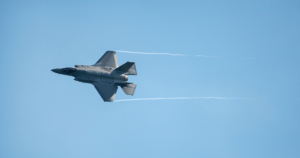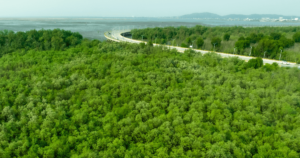The Democratic Republic of Congo’s (DRC’s) increasing copper and cobalt exports are drawing attention to the urgent expansion required to remedy the country’s poor import and export infra- structure.
The DRC’s restrictive railway and road infra- structure, particularly in Katanga province, will impact negatively on the country’s economic growth as the production plans of large copper and cobalt producers are interrupted, says analyst house Core Consultants MD Lara Smith.
The DRC currently exports about 405 167 t/y of copper and cobalt from, besides others, Lubumbashi, Tenke, Kipoi and Kakanda. This is expected to increase to 529 500 t/y between 2014 and 2016. Unless efficient railway system upgrades are undertaken, road transportation will remain Katanga province’s most efficient form of exporting its commodities.
However, most of the roads have deteriorated from a lack of maintenance and have even been destroyed in parts, owing to civil wars in recent years, from which the DRC is still recovering, she says.
“Implementing tolls on the roads and using those funds to maintain the route would probably be the best route for the DRC to take,” Smith adds.
Further, export vehicles also face a lengthy waiting period at highway checkpoints and border controls. The implementation of a one-stop border post system, which was implemented at Zambia’s borders in April, will alleviate these time delays. As vehicles drive through the border post, the system scans the cargo, examines the licences of the vehicle and driver, and assesses the vehicle’s tonnage.
“Currently, the transport of 405 167 t/y of copper or cobalt results in about 375 trucks at the borders at any given time. This is expected to increase to 508 trucks in line with the production increase from 2014 through to 2016,” says Smith.
Assuming no transportation infrastructure upgrades are undertaken, long-term copper and cobalt mining is expected to result in 763 trucks on roads at any given time. Roads in need of reconstruction include the east to west route, on the highway between Lobita, in Angola, and Beira, in Mozambique, particularly from southern Angola and central DRC. The Katanga internal road’s Kolwezi to Likasi section is inoperable during the rainy season and difficult to travel during the dry season.
“Companies do not send new trucks through this route owing to the damage caused by the road. The reconditioning of this road must be seen as a priority to ensure smooth carriage of copper and cobalt,” says Smith.
However, the Katanga internal road from Lubumbashi to Kasumbalesa is in good condition owing to a toll road system that enables regular maintenance to take place. Rail infrastructure upgrades and replacements are critical for the DRC’s cobalt-mining operations, as many railways are in poor condition throughout a large portion of Katanga and the rest of the continent.
The rail infrastructure is outdated, having been built over 100 years ago, and, as a result, is unreliable in terms of security issues. “The railway systems have a lack of cooperation, security and, currently, there is a 30-day turnaround for cobalt to reach a freighter, which creates a backlog of supply,” she says. Smith says the north–south corridor, though Zimbabwe, Botswana and Mozambique, is expected to remain a preferred route owing to the possibility of a return load through exports from South Africa to the DRC, which will offset the costs of the initial transport, says Smith.
The north–south corridor covers a distance of 3 600 km with travel times of between 29 and 32 days and crosses three to four borders, depending on the chosen route.
The Beira corridor, from Katanga to Beira through Harare, covers a distance of about 3 600 km over 14 to 15 days, and is seen as a good alternative to the north–south corridor as it requires crossing only three borders. Other less efficient routes include the route from Katanga to Dar es Salaam, in Tanzania, passing through Ndola, which takes about 27 or 28 days to cover 2 500 km, and the Walvis Bay route, covering 2 700 km over 16 to 18 days.
Smith says there are many infrastructure projects under way, such as a national route from Lubumbashi to Kinshasa/Matadi. The Lobito corridor, a Chinese-funded Angolan rehabilitation of the Benguela railway line, will cover 1800 km within eight to ten days; however, this project is only expected to be completed and operational within five years.
To view original article, click here





